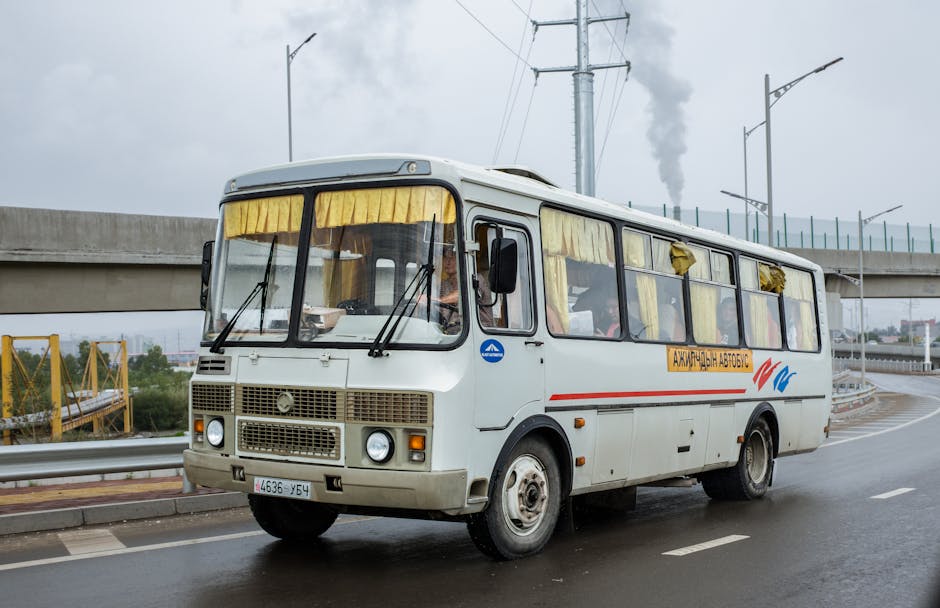Planning A Road Trip Abroad? Here's How To Estimate Mileage Overseas
Did you know that there are over 1 billion international tourist arrivals each year? With such a large number of people travelling abroad, it's no wonder that road trips have become a popular way to explore new destinations.
However, planning a road trip overseas can be quite challenging, especially when it comes to estimating mileage. Understanding the terrain and road conditions, researching speed limits and traffic regulations, utilising online mapping tools and GPS systems, considering local driving habits and customs, and factoring in rest stops and fuel consumption are all crucial factors in accurately estimating mileage for your road trip abroad.
In this article, we will delve into these aspects in detail to help you plan your road trip with confidence. Whether you're embarking on an adventure through scenic landscapes or navigating bustling city streets, having control over your estimated mileage will ensure a smooth and enjoyable journey.
Key Takeaways
- Thorough research on terrain challenges and weather conditions is essential for accurate mileage estimation during a road trip abroad.
- Understanding local driving habits, customs, and road signage is crucial for a safe and enjoyable road trip experience in foreign countries.
- Researching rest stop frequency and fuel availability is important to ensure a smoother journey and control over travel plans.
- Considering eco-friendly driving habits and fuel efficiency can maximise fuel usage, contribute to environmental sustainability, and prevent any inconveniences during the trip.
Understanding the Terrain and Road Conditions

Understanding the topography and road conditions of a foreign country is crucial in estimating mileage for a road trip abroad. The terrain challenges that one may encounter can greatly affect the distance covered during the journey. Different countries have diverse landscapes, ranging from flat plains to mountainous regions, which may require different driving techniques and result in varying speeds.
For instance, driving through hilly areas with steep inclines and winding roads will inevitably slow down the pace of travel, thereby reducing overall mileage.
Moreover, weather conditions play a significant role in estimating mileage accurately. Adverse weather such as heavy rain, snowfall, or fog can hinder visibility and make roads slippery or treacherous to navigate. In such circumstances, drivers often need to reduce their speed for safety purposes, resulting in slower progress towards their destination. Additionally, extreme temperatures can affect fuel consumption and vehicle performance.
To gather relevant information about terrain challenges and weather conditions in a foreign country, it is essential to conduct thorough research before embarking on a road trip. Understanding the topography will help travellers anticipate any difficulties they might encounter along the way and plan accordingly. By knowing what lies ahead – whether it be challenging mountain passes or long stretches of open highway – travellers can make informed decisions about routes and estimate mileage more accurately.
Once armed with knowledge about terrain challenges and weather conditions, the next step is researching speed limits and traffic regulations to ensure compliance while on the road. This comprehensive approach enables travellers to have better control over their journey while maximising their enjoyment of exploring new destinations abroad without compromising safety or efficiency.
Researching Speed Limits and Traffic Regulations

Researching speed limits and traffic regulations requires a thorough examination of the local laws and regulations in order to ensure compliance and safety while travelling.
It is crucial to familiarise oneself with the specific rules governing speed limits, as they can vary significantly between countries. Different countries have different maximum speed limits on various road types, such as highways, urban roads, and rural roads. Some countries may also impose lower speed limits during adverse weather conditions or in construction zones.
Researching road signage is equally important as it helps drivers understand the meaning of different signs and symbols that are used internationally.
Furthermore, it is essential to be aware of any additional traffic regulations that may be enforced in the country you plan to visit. These could include rules regarding seatbelt usage, child restraints, mobile phone use while driving, and alcohol consumption limits for drivers. Ignorance of these regulations could result in fines or even legal consequences.
Another aspect to consider when planning a road trip abroad is obtaining an international driving permit (IDP). An IDP serves as a translation of your domestic driver's licence and allows you to drive legally in foreign countries where your own licence might not be recognised. It is recommended to obtain an IDP before embarking on your journey.
To assist with researching speed limits, traffic regulations, road signage, and obtaining an IDP, travellers can utilise online resources provided by government transportation agencies or reputable travel organisations. These resources often provide up-to-date information about driving laws and offer guidance for safe driving practises abroad.
Transition: Now that we have explored researching speed limits and traffic regulations extensively let's move on to discussing how utilising online mapping tools and GPS systems can enhance our road trip experience overseas without getting lost along the way.
Utilising Online Mapping Tools and GPS Systems

Utilising online mapping tools and GPS systems can greatly enhance the navigation experience during international travel, ensuring accurate and efficient routeing to desired destinations. When planning a road trip abroad, these online resources become indispensable road trip essentials. Here are some ways in which online mapping tools and GPS systems can provide valuable assistance:
Comprehensive Route Guidance: Online mapping tools offer detailed maps that cover vast areas, providing a comprehensive overview of the route. These tools allow users to zoom in on specific sections for a more detailed view, enabling travellers to plan their journey effectively.
Real-Time Traffic Updates: One of the major advantages of using GPS systems is the ability to access real-time traffic updates. This feature alerts drivers about accidents, congestion, or construction along their chosen route. With this information at hand, travellers can make informed decisions and avoid unnecessary delays.
Points of Interest: Online mapping tools often include points of interest along the way such as gas stations, restaurants, hotels, and tourist attractions. This feature allows users to easily locate essential amenities or take detours to explore interesting places.
Offline Accessibility: Many GPS systems now offer offline accessibility options where users can download maps for use even when there is no internet connexion available. This feature proves invaluable when travelling through remote areas with limited connectivity.
By utilising these online resources and technology advancements like GPS systems, travellers gain control over their road trip experience by having accurate directions at their fingertips.
However, it is important to consider other factors such as local driving habits and customs before embarking on an international journey. Understanding these nuances will further ensure a safe and enjoyable road trip abroad without compromising on one's desired itinerary destination.
Considering Local Driving Habits and Customs

To fully immerse oneself in a foreign driving experience, it is essential to be aware of and adapt to local driving habits and customs. Understanding the local road etiquette and being able to interpret road signage correctly can greatly enhance the safety and enjoyment of a road trip overseas.
Local driving habits vary significantly from one country to another. For example, in some countries, honking the horn is considered rude and should only be used in emergency situations. In other places, it is customary for drivers to flash their headlights as a way of signalling that they are yielding the right of way. By familiarising oneself with these customs beforehand, travellers can avoid inadvertently offending locals or causing confusion on the roads.
Another important aspect to consider is how road signs are interpreted in different countries. While many signs may have universal symbols such as stop signs or speed limit indicators, there might be variations in their meanings or additional local signs that need to be understood. For instance, a roundabout sign may indicate that drivers already inside the roundabout have priority over those entering it. Being aware of these nuances will help drivers navigate unfamiliar roads with ease.
In order to illustrate some common differences in driving habits and interpretations of road signage around the world, here is a table showcasing examples:
| Country | Driving Habit | Road Sign Interpretation |
|---|---|---|
| Germany | High-speed driving on autobahns | Blue sign indicates an autobahn |
| Japan | Polite hand gestures as thank you | Green light means go but prepare for pedestrians |
| India | Overtaking from both sides | Yellow line indicates no overtaking |
Understanding these local customs and interpreting road signage correctly will contribute to a smoother and more enjoyable international driving experience. Additionally, by factoring in rest stops and fuel consumption, travellers can ensure they have everything they need for their journey ahead.
Factoring in Rest Stops and Fuel Consumption

Resting and refuelling are essential considerations when embarking on a journey in unfamiliar driving territory, akin to taking necessary pit stops during a long and arduous race. In order to estimate mileage for a road trip abroad, it is crucial to factor in rest stops and fuel consumption.
Rest stop frequency can vary greatly depending on the country and region you are travelling through. Some countries have well-maintained rest areas with amenities such as clean toilets, picnic spots, and even playgrounds for children. These countries may also have strict regulations regarding driving hours and mandatory rest periods for drivers.
On the other hand, there are countries where rest stops may be few and far between or non-existent. It is important to research the specific driving customs of each country you plan to visit in order to determine how often you should take breaks during your journey. Planning ahead will help ensure that you don't find yourself tyred or fatigued while driving in unfamiliar terrain.
In addition to rest stop frequency, fuel efficiency is another vital consideration when estimating mileage for a road trip abroad. Different countries have varying fuel prices and availability, so it's essential to research the average cost of fuel in each country along your route. Furthermore, certain regions may have limited access to gas stations, particularly in remote areas or developing nations.
To maximise fuel efficiency during your road trip overseas, consider adopting eco-friendly driving habits such as maintaining steady speeds, avoiding unnecessary idling, and reducing excess weight by packing light. These practises not only save money on fuel costs but also contribute to environmental sustainability.
By factoring in rest stop frequency and fuel efficiency when estimating mileage for a road trip abroad, you can ensure a smoother journey while maintaining control over your travel plans. Proper planning will allow you to enjoy the scenic routes without worrying about running out of gas or feeling fatigued along the way.
Additionally, being aware of the frequency and locations of fuel stations will help you make informed decisions about when and where to refuel, maximising both your fuel efficiency and peace of mind during the trip.
Frequently Asked Questions
What are some common road signs and symbols that I should be familiar with when driving abroad?
Common road signs and symbols that drivers should be familiar with when driving abroad include:
- Speed limit signs
- Stop signs
- Yield signs
- No entry signs
- Pedestrian crossing signs
- Traffic light signals
These road signs play a crucial role in ensuring road safety and adherence to driving regulations. Understanding these common road signs is essential for drivers to navigate unfamiliar roads confidently and responsibly while maintaining control over their driving experience.
Are there any specific driving laws or regulations that tourists should be aware of in certain countries?
Driving laws in different countries can vary significantly, and it is essential for tourists to be aware of the specific driving regulations in each country they visit.
While some regulations may be similar across countries, such as adhering to speed limits and wearing seat belts, there are also unique laws that tourists should familiarise themselves with.
These may include requirements for carrying certain documents like an international driver's licence or mandatory equipment like reflective vests.
Being knowledgeable about these driving laws is crucial to ensure a safe and hassle-free road trip experience abroad.
How can I find information about toll roads and bridges in the country I am planning to visit?
To find information about toll roads and bridges in the country you are planning to visit, there are several resources available.
Online maps and travel websites often provide detailed information on toll roads and bridges, including their locations and costs.
Additionally, car rental companies can offer guidance on toll road policies and provide devices for electronic payment.
Gas stations along major routes typically have information on nearby toll roads as well.
Utilising these resources will ensure a smooth journey while renting a car and finding gas stations during your road trip abroad.
Are there any specific safety tips or precautions that I should take when driving in a foreign country?
When driving in a foreign country, it is crucial to prioritise safety precautions and adhere to driving etiquette. To ensure a smooth journey, familiarise yourself with the local traffic laws, signage, and road conditions.
It is advisable to carry essential documents such as your driver's licence and insurance papers. Additionally, maintain awareness of potential hazards like unfamiliar road layouts and different driving customs.
By taking these measures, you can navigate foreign roads with confidence and mitigate any potential risks.
Are there any resources or websites that provide real-time traffic updates and road conditions for the country I am travelling to?
Real-time traffic apps and road condition websites are valuable resources for travellers seeking to stay informed about the current state of roads in their destination country. These apps provide up-to-date information on traffic congestion, accidents, and road closures, allowing users to plan their routes accordingly.
Road condition websites offer insights into the overall quality of roads, including information on construction projects or weather-related hazards. By utilising these resources, travellers can make informed decisions and navigate unfamiliar roads with greater ease and efficiency.
Contact us to discuss our services now!

